about ISO19026
Purpose of ISO 19026
This International Standard has been created to solve the following problems.
Since people usually enter restrooms alone, they are not able to ask other people for help if they do not understand something. When visually impaired users enter a restroom, they must first touch the entire wall to confirm the layout and type of facilities with their hands, which requires more time and effort than necessary.
Users with physical disabilities may find it difficult or impossible to use the flush button or (toilet) paper dispenser depending on their positions, because of incompatibilities with their movement abilities.
* Supplement: Japan Sanitary Equipment Industry Association is a member of the draft review of the JIS standard (S0026) on which ISO 19026 is based.
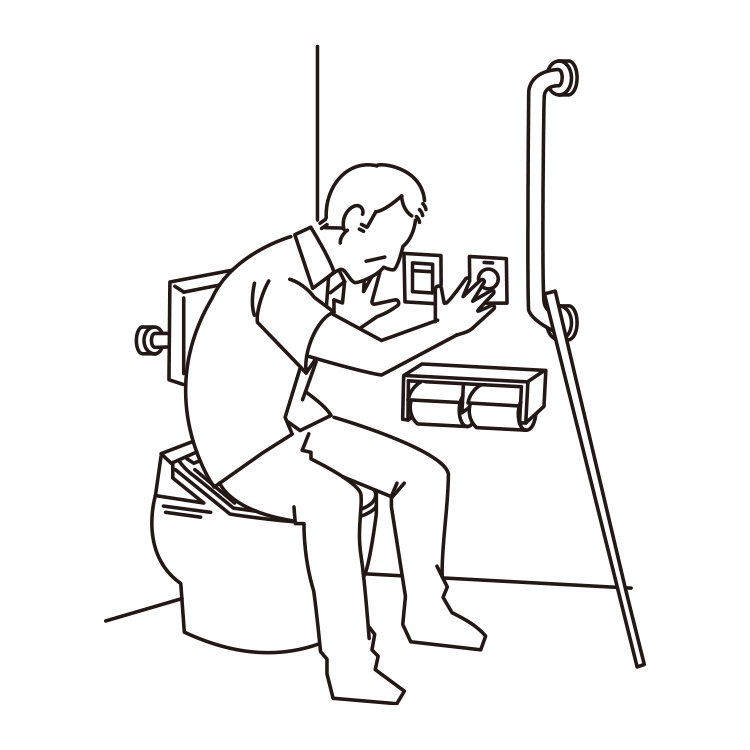 Persons with low vision
Persons with low vision
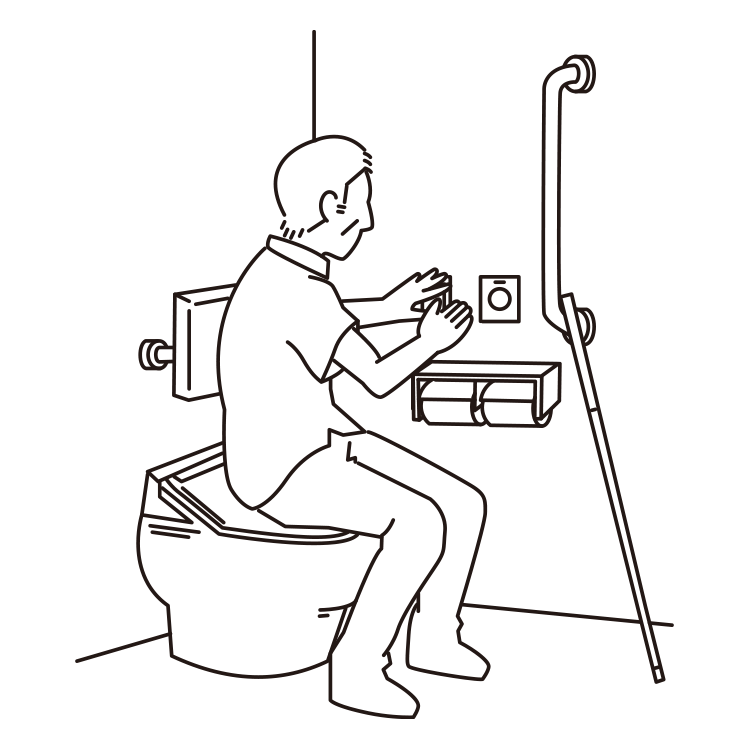 Persons with complete blindness
Persons with complete blindness
 Persons using wheelchair
Persons using wheelchair
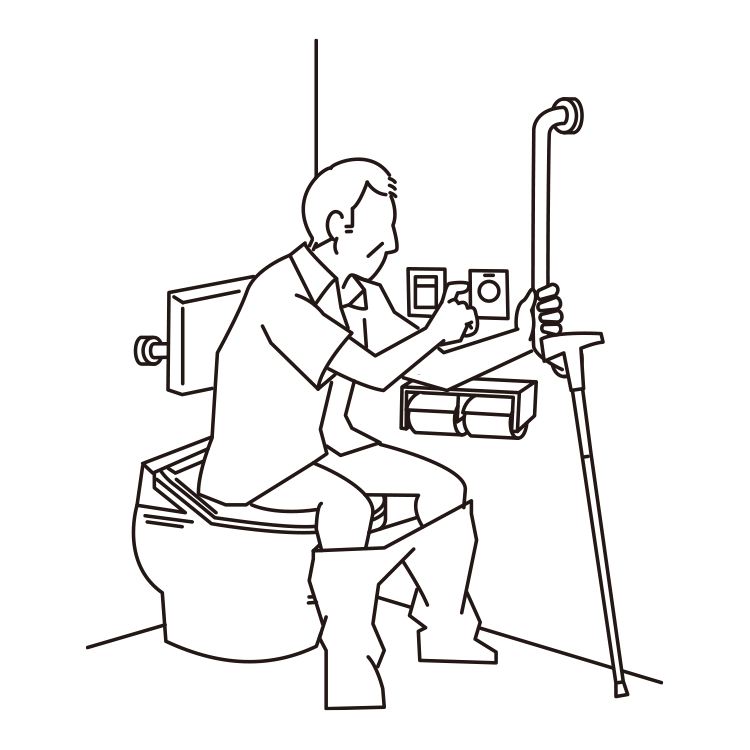 Older persons
Older persons
Overview of ISO 19026
Installation of the (toilet) paper dispenser, flush button, and call button on the wall on the side of the toilet seat within the reach of users with physical disabilities while seated on the toilet.
Placement of the flush button above the (toilet) paper dispenser and placement of the call button behind the toilet seat at the same height as the flush button, so visually impaired users can easily grasp the position by touch.
Specification of the shape and color of the buttons so visually impaired users can differentiate between the flush button and call button by touch.
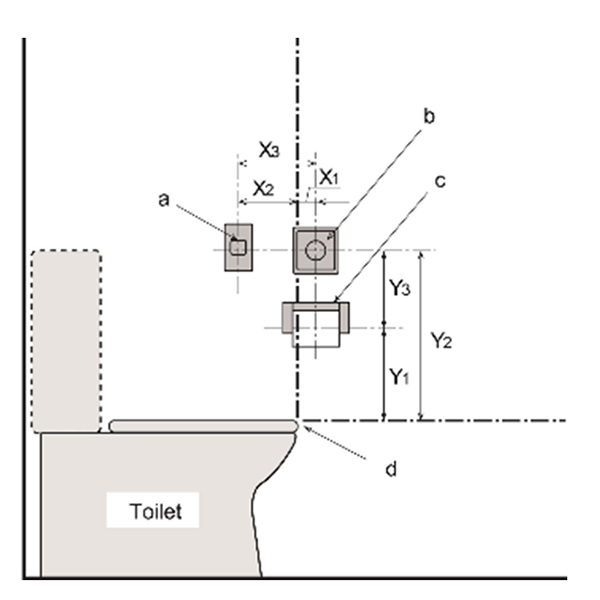
Figure 1 - Arrangement of a flushing button, a call button, and a paper dispenser
Source:ISO19026 Accessible design - Shape and colour of a flushing button and a call button,and their arrangement with a paper dispenser installed on the wall in public restroom
Examples of Restrooms to Which ISO 19026 Have Been Applied
The Japanese Industrial Standard (JIS S 0026) on which ISO 19026 is based, is cited not only in the domestic barrier-free guidelines* but also in the Tokyo2020 accessibility guidelines, which regulate accessible designs for train stations, airports, stadiums, etc. It is widely reflected in the stadium facilities restrooms, train stations, airports, and related facilities for the Olympic Paralympics that were held in 2021.
* The design guidelines for buildings based on the Barrier-Free Law (Design guidelines of buildings for users with accessibility needs, March 2021 revision) cite this standard not only for wheelchair-user restroom stalls but also for general stalls.
Click here for more information about flushing button and call button.
https://www.sanitary-net.com/utsukushitoilet/en/howtouse/
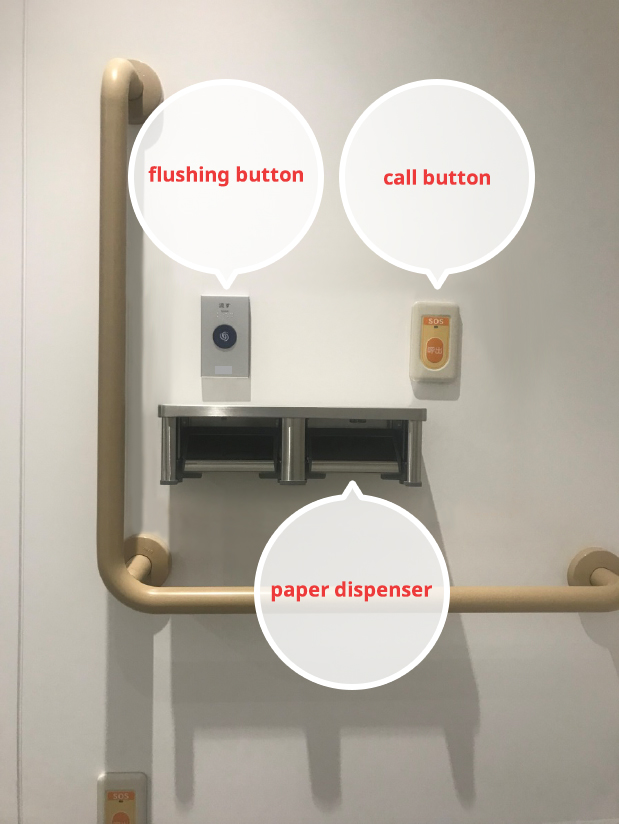 Sports facility
Sports facility
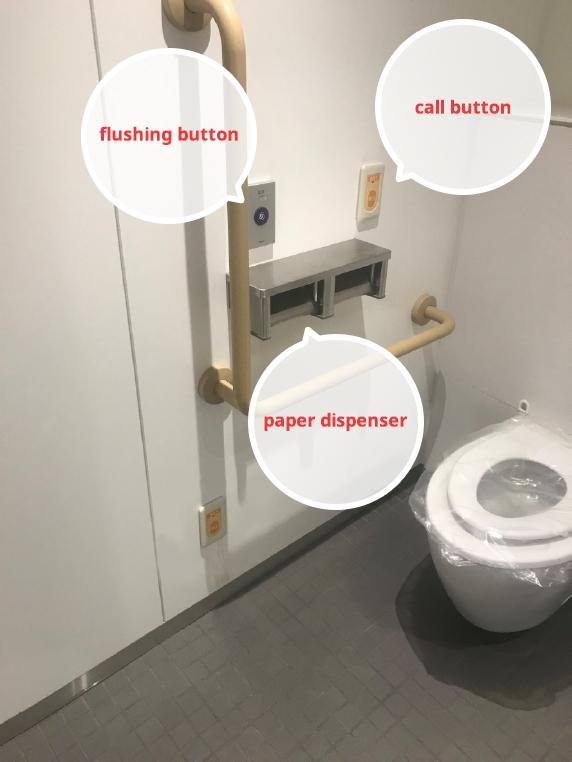
Source:JAPAN SPORT COUNCIL HP
